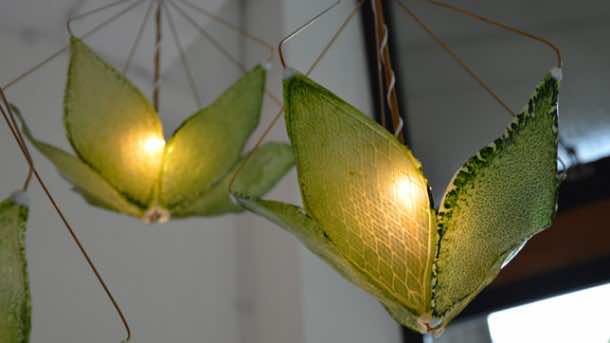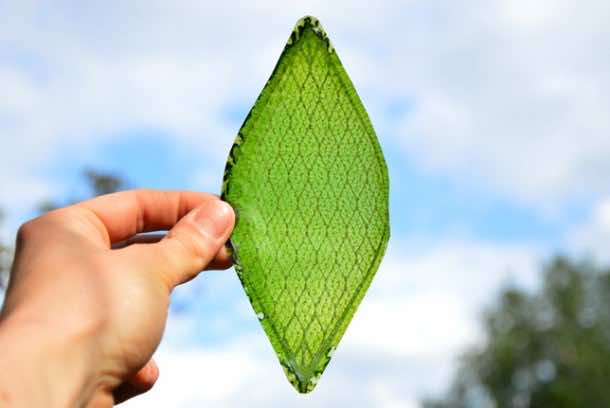Space missions have to rely on Oxygen tanks both for the survival of human workforce. How cool would it be if there was a way to spontaneously convert the Carbon Dioxide back to Oxygen while zooming across space? A graduate of the Royal College of Art named Julian Melchiorri has recently made an artificial leaf from silk elements that can produce the much-needed gas in space missions and got help from the silk laboratory of the Tufts University.
Now we know that photosynthesis is the most effective process to get free Oxygen, but there are limitations to growing plants on space missions, and thus we couldn’t use this basic life process to our advantage. At least that was the case until now when this artificial leaf was made. It combines a certain protein found in the “silk and the chloroplast” that is the main raw material responsible for this process. In the presence of sunlight, this artificial leaf can produce Oxygen provided you give ample water and sunlight conditions to it. In space missions, water is also a scarce commodity and it is continuously recycled throughout the journey.
The lightweight leaf is the first attempt to use biological processes to our advantage simply because they are simple natural processes that can provide the stability in a man-made environment. It can also be used to produce electric lighting as well, thus fulfilling multiple objectives. In addition to space, this artificial leaf technology can be used to maintain a vital supply of Oxygen around buildings as well since many of them get deprived of the optimum amount needed for human body from time to time.
Probably one day we will have to use the same technology on earth if we continue to cut trees. Let’s just hope that day never comes.





